The Cost of 32 GB RAM: Market Insights and Trends

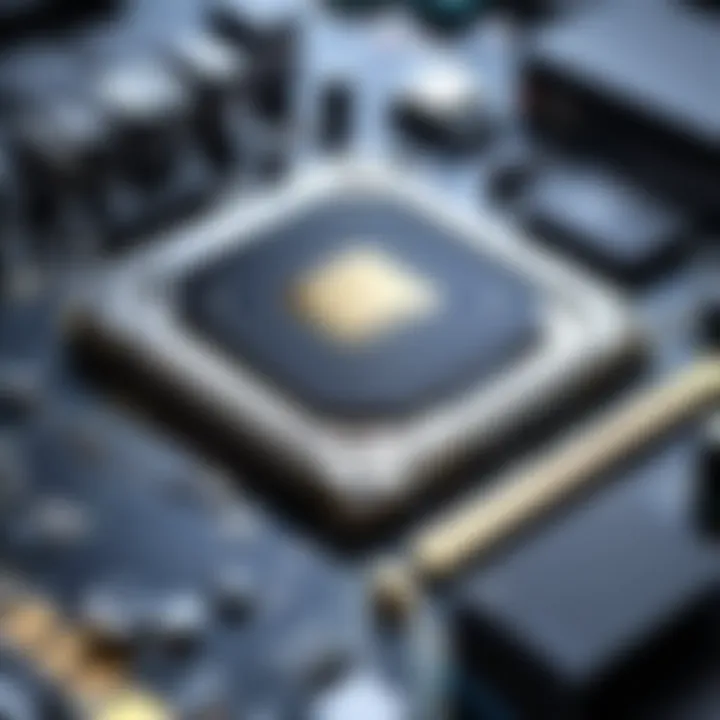
Intro
In recent years, the computing landscape has evolved rapidly, and so has the demand for better memory solutions. 32 GB RAM has become the sweet spot for many tech enthusiasts, gamers, and IT professionals. The cost associated with acquiring this amount of memory is subject to multiple factors. Understanding these factors is essential for making an informed purchase decision. This article aims to dissect current market conditions that influence the pricing of 32 GB RAM, along with an analysis of different brands, performance attributes, and future outlooks.
Product Overview
Brand information
Numerous brands offer 32 GB RAM modules, each presenting unique characteristics. Some notable players in the market include Corsair, G.SKILL, Crucial, and Kingston. These manufacturers are known for their reliability and performance. Each brand has specific series tailored to different user needs, such as gaming, workstation tasks, or general computing.
Key specifications
When considering 32 GB RAM, buyers should look at specifications such as:
- Type: DDR4 is currently the standard, while DDR5 is emerging.
- Speed: Measured in MHz, affects overall performance.
- Latency: Lower latency numbers can lead to better speed.
Pricing
Prices for 32 GB RAM can vary significantly. Currently, they range from around $100 to $200, depending on brand, specifications, and market conditions. Fluctuations happen, influenced by demand, supply chain issues, and global trends.
Performance Comparison
Benchmark tests
Benchmarking 32 GB RAM is crucial to understanding its performance. Tests often cite metrics like read and write speeds, along with gaming performance benchmarks that help gauge real-world applicability.
Speed and efficiency comparisons
In terms of speed, modules like Corsair Vengeance LPX offer high frequencies that can enhance gaming and multitasking. On the other hand, G.SKILL Ripjaws series focuses on stability over sheer speed, making it suitable for workstation environments. Efficiency often depends on the use case and specific application needs.
Features and Technology
Unique features
Different brands incorporate unique features, such as heat spreaders for thermal management or RGB lighting for aesthetic appeal.
Technological advancements
Innovations such as XMP (Extreme Memory Profile) allow users to overclock their RAM effortlessly for performance gains without needing extensive knowledge.
Compatibility with other devices
Compatibility is paramount. Ensure the selected RAM is compatible with motherboards and processors. Higher frequencies might require specific motherboards to utilize their full potential.
Pros and Cons
Strengths of the product
- Enhanced multitasking
- Smoother gaming experience
- Future-proofing for software demands
Areas for improvement
- Price volatility
- Overkill for basic office tasks
Value for Money
Cost-effectiveness
When evaluating value for money, consider the intended use. For gamers and creative professionals, investing in 32 GB RAM can yield enhanced performance and longevity, justifying the upfront cost.
Long-term benefits
Long-term usage speaks volumes about cost effectiveness. Higher RAM capacity typically ensures that a system remains responsive and effective for years, thus amortizing initial costs over time.
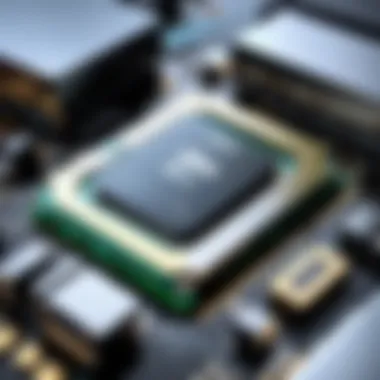
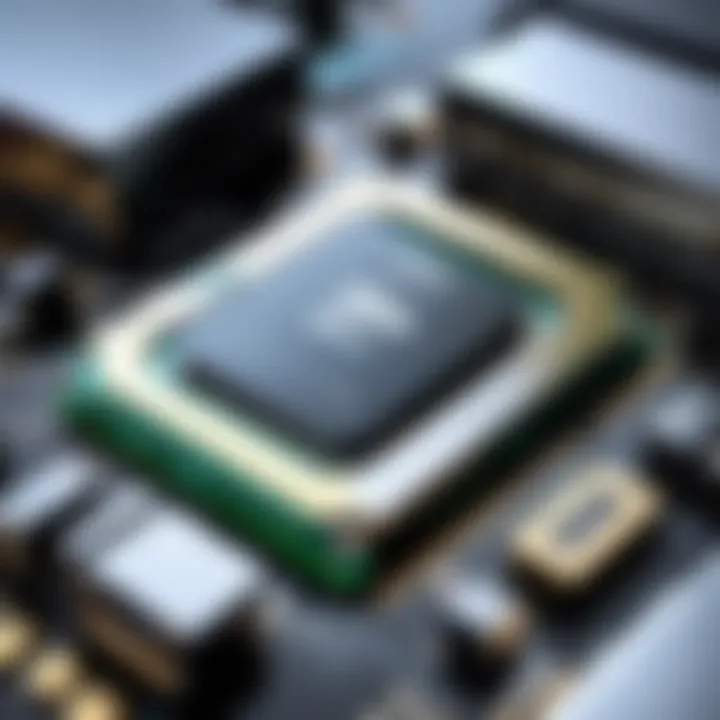
Comparison with similar products
Compared to 16 GB RAM, which fits general use cases, 32 GB provides a noticeable difference in performance, particularly for demanding applications.
In summary, understanding the cost and associated factors of 32 GB RAM is essential for maximizing value and performance. The right choice can lead to enhanced productivity and gaming experiences.
Understanding RAM and Its Functionality
When discussing computer hardware, RAM, or Random Access Memory, plays a crucial role. This section aims to elucidate the significance of RAM in a computing environment, particularly why it merits attention when examining the cost of 32 GB RAM. Understanding RAM and its various forms helps buyers and tech enthusiasts appreciate the nuances that affect cost and performance.
What is RAM?
RAM, or Random Access Memory, serves as the short-term memory of a computer. It allows the CPU to access and store data quickly while tasks are ongoing, making it essential for smooth performance. Unlike storage devices, which retain data long-term, RAM is volatile. This means that all data is lost when the power is turned off. In essence, RAM facilitates immediate data processing, thus improving overall system speed and efficiency.
Types of RAM
- DDR3: DDR3 (Double Data Rate Type 3 Synchronous Dynamic RAM) was the standard for many years. Its main characteristic is its lower power consumption compared to its predecessor, DDR2. However, its speed does not match newer iterations. DDR3 is frequently chosen for budget builds or older systems, making it a beneficial choice where cost security is a priority. Its disadvantages include limited upgrade paths since many modern motherboards do not support it.
- DDR4: Released after DDR3, DDR4 brought several enhancements. It offers greater speed, lower voltage, and higher capacities compared to its predecessor. This makes DDR4 very popular in contemporary systems. It reduces power consumption and provides improved bandwidth, benefiting high-performance computing tasks. Some users may consider DDR4 to be somewhat more expensive, but its advantages often justify the cost.
- DDR5: This is the latest RAM standard. Its architecture allows for higher bandwidth and efficiency, targeting advanced gaming and professional applications. The primary characteristic of DDR5 is its significant speed increase over DDR4 while maintaining lower power usage. However, it is usually more costly and might only be beneficial for new builds or high-performance requirements. Users should weigh these factors against their needs before choosing DDR5.
Role of RAM in System Performance
RAM's primary function is to store data that the CPU needs immediate access to, greatly enhancing system performance. More RAM allows a system to handle multiple applications simultaneously without slowing down. For gaming, content creation, or running virtual machines, sufficient RAM is essential. Insufficient RAM can lead to slow load times and decreased overall efficiency. By understanding how RAM affects performance, buyers can make more informed decisions on how much is necessary for their purposes.
Market Overview of GB RAM Prices
The exploration of the current market overview of 32 GB RAM prices is essential for understanding the financial dynamics impacting consumers and businesses alike. RAM, or Random Access Memory, is a crucial component in modern computing systems. Its price can fluctuate based on numerous factors, making it vital for potential buyers to grasp the trends and historical data that shape the RAM market.
Knowing where the market currently lies provides several benefits. Firstly, it helps consumers make informed purchasing decisions. By understanding price patterns, buyers can identify opportune moments to invest in RAM without overpaying. Secondly, it allows IT professionals to plan budgets and resources more effectively within organizations. Lastly, this section will shed light on the overall economic landscape of computer hardware, which can parallel advancements in technology and shifts in consumer demand.
Current Pricing Trends
Currently, the price of 32 GB RAM has seen significant fluctuations, attributed to a mix of global supply chain difficulties and shifting consumer needs. As of now, prices typically range from $100 to $250, depending on brand, type, and specifications.
One noticeable trend is the rising preference for DDR4 over DDR3 RAM. DDR4 is not only more efficient but also offers better performance metrics, leading to a gradual increase in its market share.
"The choice between DDR3 and DDR4 RAM can significantly affect the overall system performance and energy consumption."
The emergence of DDR5 RAM is also starting to influence pricing strategies. While DDR5 is still relatively new and more expensive, it holds promise for future applications. This creates a situation where current DDR4 prices might rise due to consumer hesitancy to invest in soon-to-be outdated technology.
Historical Price Fluctuations
Analyzing historical price fluctuations offers insight into how external factors have historically shaped the RAM market. Over the past five years, the average price of 32 GB RAM saw peaks and troughs, demonstrating sensitivity to economic conditions.
- 2018-2019: Prices experienced a high due to soaring demand from gamers and content creators, with peaks nearly reaching $300.
- 2020: The onset of COVID-19 disrupted supply chains, leading to a temporary drop in prices as manufacturers scrambled to adjust to new conditions.
- 2021-Present: The prices began to stabilize, reflecting a delicate balance between improving supply chains and consistent consumer demand.
These past trends signal crucial lessons for consumers and professionals alike. Trends often recur, suggesting that understanding historical context can provide predictive power for future pricing.
In summary, knowing the market overview and current pricing trends is important for anyone looking to invest in 32 GB RAM. It not only allows for smarter purchasing decisions but also fosters a deeper understanding of the tech market as a whole.
Factors Influencing RAM Prices
The price of RAM, particularly 32 GB modules, does not exist in a vacuum. Various elements contribute to its fluctuation in the market. Understanding these factors is crucial for buyers looking to make informed decisions. Factors such as global supply chain issues, technological advancements, and consumer demand play significant roles in determining the prices. Each of these influences interacts with one another, creating a complex landscape for potential buyers.
Global Supply Chain Issues
In recent years, global supply chain disruptions have significantly impacted the availability and pricing of electronic components, including RAM. Events such as the COVID-19 pandemic have exposed vulnerabilities in manufacturing and distribution networks. For instance, many manufacturers rely on just-in-time production methods, which can lead to supply shortages during unexpected events. Additionally, geopolitical tensions and trade policies can impede the flow of materials necessary for RAM production.
The semiconductor industry often faces shortages of key materials, like silicon wafers. This scarcity can drive up prices. Basic economic principles suggest that when supply decreases, prices typically rise. Therefore, buyers of 32 GB RAM must consider how global events affect production timelines and ultimately, pricing.
Technological Advancements
Technological progress has a dual effect on RAM prices. On one hand, newer RAM technologies typically command a higher price. For example, DDR5 RAM offers faster speeds and improved efficiency compared to its predecessors. As these advancements become accessible, consumers may need to pay a premium for the latest technology. However, as older technologies become obsolete, their prices may drop due to decreased demand.
Manufacturers invest significantly in research and development to improve RAM modules. This investment can influence retail prices, as companies aim to recoup their costs. Additionally, as technological advancements lead to improved manufacturing processes, it may reduce production costs over time. The effect of technological advancements on pricing is thus twofold, with initial high costs followed by potential decreases as newer technologies take over.
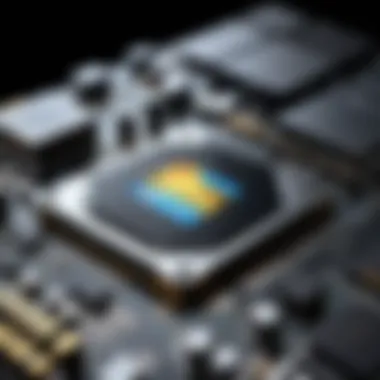
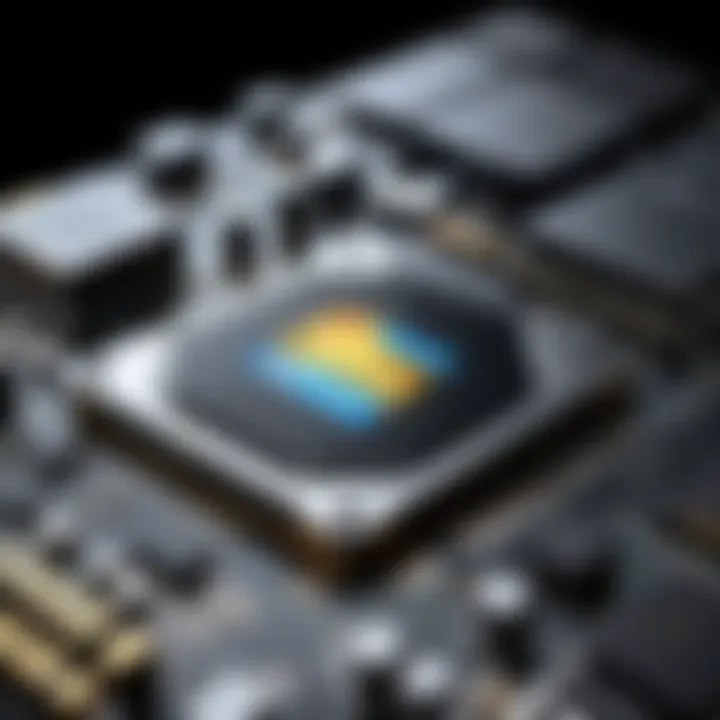
Consumer Demand
The demand from consumers is a powerful influence on RAM pricing. High-performance tasks such as gaming, content creation, and virtualization encourage consumers to seek out larger RAM sizes like 32 GB. When demand spikes, especially during peak seasons such as back-to-school or holiday shopping, suppliers often increase prices to balance supply with demand.
On the flip side, if market saturation occurs—when many consumers have already purchased the desired RAM—prices can stabilize or even decline. Seasonal sales and new technology releases also affect demand. For tech enthusiasts and professionals, keeping an eye on market trends can lead to strategic buying decisions.
"Understanding these factors can help you anticipate price changes and make informed purchasing choices in a fluctuating market."
In summary, the interplay between global supply chain issues, technological advancements, and consumer demand forms a comprehensive picture of the RAM pricing landscape. For anyone looking to buy 32 GB RAM, this analysis provides essential context for navigating the market effectively.
Comparing Brands and Manufacturers
When considering the cost of 32 GB RAM, evaluating different brands and manufacturers becomes essential. Each brand can offer distinct characteristics that cater to various user preferences and needs. Understanding these differences is crucial for making an informed purchase that balances performance, reliability, and price.
Different RAM manufacturers present a variety of options, ensuring compatibility with different systems and enhancing overall user experience. Performance metrics, build quality, and warranty offerings vary widely among brands, impacting long-term satisfaction. Examining these aspects helps potential buyers discern which brand aligns best with their specific requirements.
Popular RAM Brands
Corsair
Corsair is recognized for its high-performance RAM solutions. A key characteristic of Corsair is its emphasis on gaming and enthusiast markets. This focus ensures that their products are optimized for tasks that require high-speed processing. Corsair's unique feature includes customizable RGB lighting in many of its models, which enhances aesthetics in gaming setups. However, the price may be higher compared to other brands, reflecting its premium positioning in the market.
G.Skill
G.Skill is another brand that garners respect, especially among gamers. It is well-known for offering excellent performance at competitive prices. The standout aspect of G.Skill is its ability to balance cost with high-quality components. Users often appreciate its products for overclocking potential, making them suitable for heavy-duty applications. On the downside, G.Skill products may not come with as robust a warranty as some other leading brands, which could concern some users.
Kingston
Kingston has built a reputation for reliability and robust performance. A notable trait of Kingston is its vast array of memory products, catering to both budget-conscious consumers and high-end users. The company's focus on quality control ensures that their RAM offerings are dependable. Unique to Kingston is their extensive support and warranty services, giving users peace of mind. However, some users might find Kingston's product line less flashy compared to competitors that emphasize aesthetic designs.
Crucial
Crucial is a brand that excels in providing value for money. The key attribute of Crucial products is their affordable pricing coupled with solid performance. This makes them an attractive choice for everyday users and those upgrading their systems. A defining feature of Crucial is their intuitive online tool for determining compatible RAM for specific systems. Nevertheless, Crucial might not always meet the high-performance needs of advanced gamers or professionals, which is a consideration for potential buyers.
Brand-Specific Pricing Insights
Understanding the specific pricing of these brands is fundamental. Prices can vary significantly based on performance specifications and brand positioning. Keeping an eye on current price trends can reveal market dynamics and optimal purchasing times.
Performance Metrics of GB RAM
Understanding performance metrics of 32 GB RAM is essential for both consumers and professionals. These metrics determine how well the RAM can support various tasks, from routine computing to high-demand applications. By focusing on different elements like latency, speed, and application-specific performance, you can assess which RAM option is most beneficial for your needs. The right choice not only enhances the efficiency of your computer system but also influences your overall user experience.
Latency and Speed Considerations
Latency and speed are two critical aspects of RAM performance. Latency refers to the time it takes for the RAM to respond to a request, while speed indicates how fast it can transfer data. High-speed RAM with low latency will provide better performance in most scenarios.
*Standard metrics include:
- CAS Latency (CL): Lower values indicate faster response times.
- Transfer Speeds: Measured in megahertz (MHz), higher numbers mean better performance.*
When purchasing 32 GB RAM, consider these two parameters closely. A RAM module may have high transfer speeds, but poor latency can negate those benefits in many applications.
Real-world Performance Applications
Evaluating RAM performance in real-world applications is vital for understanding its practical benefits. Various tasks can stress RAM differently. The following are three significant areas:
Gaming
In gaming, 32 GB RAM plays a crucial role in enhancing performance. Modern games often require significant memory to run smoothly. With higher RAM capacity, games can load assets more quickly, reducing lag and improving frame rates.
The key characteristic of gaming performance is seamless multitasking. Gamers may run various applications simultaneously, like streaming software or communication tools, without experiencing slowdowns.
However, while 32 GB RAM offers many benefits, it is worth noting that excessive RAM might not yield noticeable improvements for less demanding games.
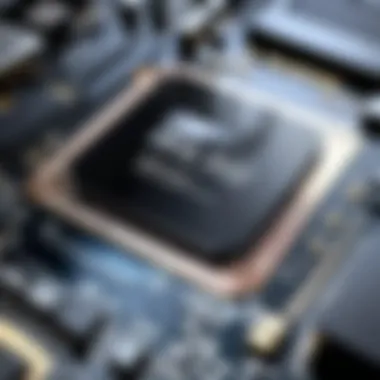
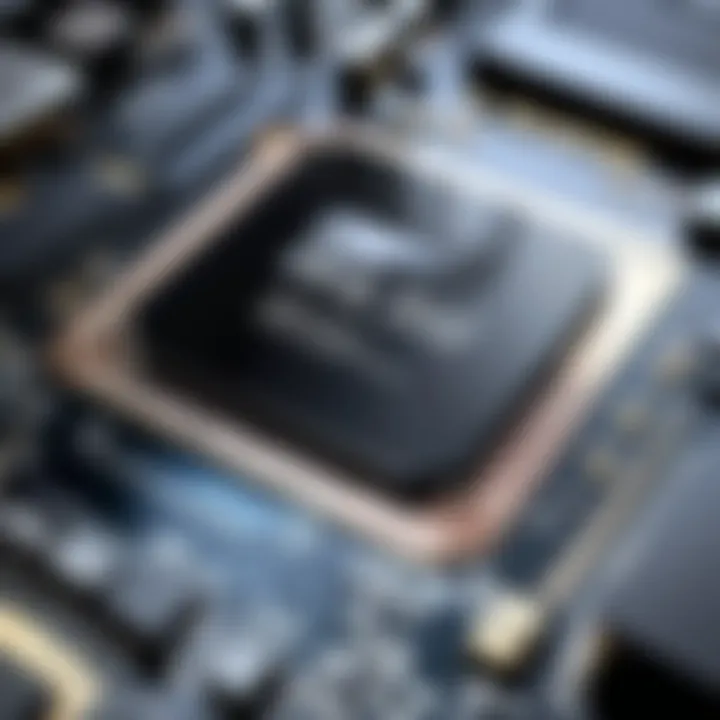
Content Creation
For content creators, 32 GB RAM can dramatically streamline workflows. Whether you are editing videos, designing graphics, or working with digital audio, that extra RAM capacity allows for large file handling and multiple applications running at once.
One unique feature of content creation is the ability to utilize advanced software tools efficiently. Programs such as Adobe Premiere Pro and After Effects benefit substantially from larger memory. However, high RAM demands also mean that the overall system configuration must be well balanced to avoid bottlenecks in CPU or GPU performance.
Virtualization
Virtualization is another area where 32 GB RAM excels. In environments where multiple operating systems run on virtual machines, sufficient RAM is crucial. The ability to allocate dedicated memory to each virtual machine enhances stability and performance.
The key characteristic of virtualization is resource allocation. More RAM means users can create and manage more virtual machines simultaneously. While 32 GB RAM is ideal for personal use, enterprise-level applications may require even larger configurations to handle more significant workloads effectively.
Understanding these performance metrics not only aids in selecting the right RAM but also ensures that you can leverage your system's capabilities fully.
Buying Recommendations
When evaluating the purchase of 32 GB RAM, understanding the appropriate timing and the right specifications is crucial. This section emphasizes the importance of making informed choices regarding your RAM investment. The significance lies in optimizing performance and ensuring compatibility with existing hardware. By following sensible buying recommendations, potential buyers can maximize their efficiency and avoid unnecessary expenses.
When to Buy GB RAM
Determining the best time to buy 32 GB RAM involves several considerations. First, one should keep an eye on market trends and pricing fluctuations. Prices may rise during holiday sales or product launches, which can create urgency but may also inflate costs.
Additionally, planning ahead for system upgrades is essential. If your current setup struggles with multitasking or demanding applications, it may indicate a need for an upgrade. This timing can also align with new product releases in the RAM market, which may drive prices down.
"Being aware of market fluctuations can lead to favorable buying opportunities."
Furthermore, consider purchasing during off-peak seasons. Prices may lower when demand decreases. Staying updated on technological advancements can also aid in timing purchases to the next significant product release, ensuring you secure the best possible deal.
How to Choose the Right Type
Choosing the correct type of 32 GB RAM involves thorough understanding of your needs and system specifications. Key factors include the RAM speed, latency, and compatibility with your motherboard. Modern systems generally favor DDR4 or DDR5 memory, with each offering different performance characteristics.
- Speed and Latency: Assess the memory speed measured in MHz. Higher speeds may enhance performance in demanding applications. Keep an eye on latency ratings as well. Lower numbers indicate faster data processing.
- Compatibility: Ensure that the RAM chosen is fully compatible with your motherboard specifications. Checking the motherboard manual or manufacturer's website can clarify these details.
- Type: Evaluate if you need dual-channel or single-channel RAM. Dual-channel configurations allow for greater bandwidth, potentially boosting performance.
- Brand Reputation: Some brands stand out due to reliability and warranties. Consider well-reviewed options from Corsair, G.Skill, Kingston, and Crucial, known for their quality products in the RAM market.
By integrating these considerations, you can enhance both the functionality of your system and your overall computing experience. The right choice creates a powerful setup capable of handling various tasks efficiently.
Future Trends in RAM Pricing
Understanding future trends in RAM pricing is vital for consumers and industry professionals. The RAM market is influenced by multiple factors that can alter its pricing structure. In this section, we will analyze the predicted market changes and the impact of emerging technologies. This knowledge helps buyers make informed decisions and clear evaluations that reflect possible future costs.
Predicted Market Changes
The RAM market is in constant flux. Several aspects will likely affect prices in the near future. Economic conditions, production capacities, and technological advances will all impact the prices of RAM. As global demand continues to increase—especially in sectors like gaming, data science, and artificial intelligence—the pressure on supply chains becomes notable.
- The global economy plays a significant role. Economic downturns can limit consumer spending, affecting demand. Conversely, strong economic growth usually leads to increased investment in technology, which drives up demand for components like RAM.
- Supply chain disruptions, exacerbated by events like the pandemic, have shown how vulnerabilities can affect pricing. If manufacturers face challenges such as raw material shortages, it could cause a spike in prices.
- Competition among brands can create pricing wars, driving prices down. However, if a few manufacturers dominate the market, it may lead to higher prices due to less competition.
It is important to keep tabs on these predicted changes to understand the most appropriate timing for purchasing RAM.
Emerging Technologies and Their Impact
Technological advancements play a crucial role in shaping the RAM market. New types of RAM, like DDR5, not only promise enhanced performance but also create shifts in pricing dynamics.
- DDR5 RAM offers higher speeds and increased bandwidth, which can justify higher price points initially. The adoption of this technology by manufacturers can influence current pricing strategies for older RAM types like DDR4.
- As more devices move toward requiring larger memory capacities, the demand for higher capacity RAM will increase. This shift can lead to higher prices for 32 GB modules if supply does not meet demand.
- Additionally, increased focus on artificial intelligence and machine learning will drive demand for higher RAM options, creating a potential price rise in the next few years.
Understanding how emerging technologies impact RAM pricing can help consumers recognize when it is best to invest in memory upgrades and what specifications will yield the best return on investment.
"Proactive buyers stay ahead by understanding the interplay of market forces and other external factors, ensuring they are ready to purchase at the optimal time."
Ending
The concluding section of this article synthesizes the crucial aspects that influence the cost of 32 GB RAM. A thorough understanding of the pricing landscape aids tech enthusiasts, gamers, and IT professionals in making informed purchasing decisions. Each factor presented in the article contributes to the larger picture of RAM costs.
In summary, several elements play a significant role in determining RAM prices:
- Market trends and historical data reveal fluctuations over time, shedding light on pricing strategies of various manufacturers.
- Global supply chain issues and technological advancements continue to mold the market, leading to changes in availability and performance.
- Consumer demands, varying by use-case scenarios such as gaming or content creation, create a dynamic and ever-changing demand landscape.
As potential buyers contemplate their options, recognizing these critical insights supports strategic decision-making. Understanding that not all RAM is created equal enables users to select the right type suited for their specific needs and budget constraints.
The ability to distinguish between brands and models, along with weighing performance metrics, adds a layer of depth to the purchasing process.







